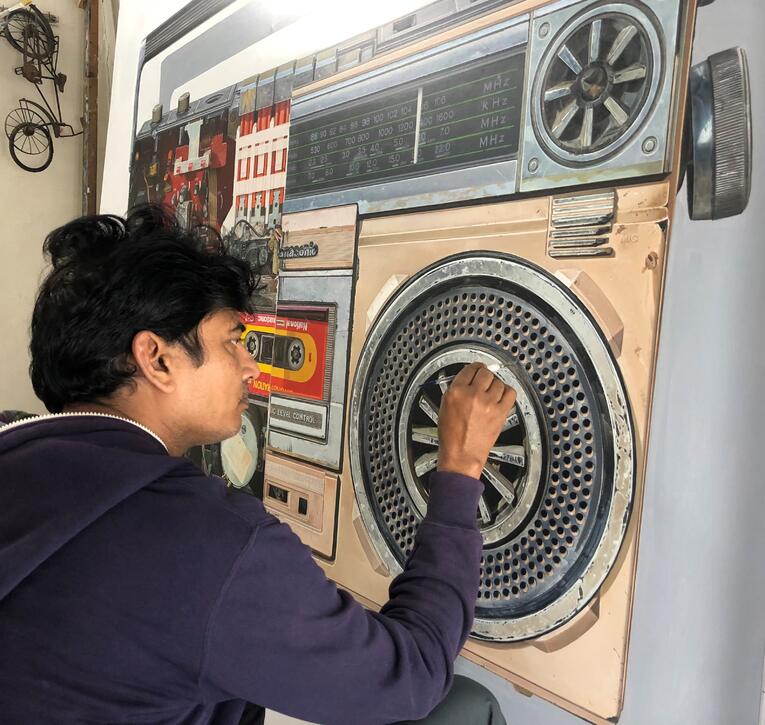Don’t go by the first impression when you visit the virtual exhibition “Museum of Memories” being presented by Art Alive Gallery. There is more to the mundane objects brought alive by Anjaneyulu G in his oil and acrylic on canvas, oil on canvas and linen artworks. The isolation of the objects and their reflection, forces one to go beyond the mere image. The sub-text is what makes the show worthwhile!
The virtual show is on till February 20.
The objects depicted include kettles, a tape recorder, a lantern, an iron box and a gun. According to the artist, these works try to capture the memories of days before. “Most of the subjects are now relics. The idea is to bring back some of the common everyday objects that have now become decrepit, but still hold some nostalgic value.”
There is a deeper meaning to these objects as the theme is partly nostalgic and partly what memories mean to us. “I am trying to take the viewers back to the times when the subjects were almost indispensable, but now have been either replaced, abandoned or simply forgotten,” explains Anjaneyulu.
Striking a chord
The items strike an immediate chord with us as they make us think about them, wondering about their condition and where in our house they must be lying. Anjaneyulu aptly puts in “Most of them were so common during my childhood that I wonder how they lost their place to others in the flow of time.”

The Tape Recorder with its machinery visible chooses to impress one about the importance it once commanded. “Tape recorders brought music so close to people. With radios, one had a certain amount of waiting, a certain amount of uncertainty. The tape record changed all that. For those who could afford the cassettes, they never had to wait,” observes the artist.
Even though now most of the urban households have fancy irons – with a whole lot of jazzy features – the work Iron Box immediately brings to mind the vivid image of our neighbourhood presswallah, under a tarpaulin or plastic sheet, delicately setting the crease of the clothes Making a pertinent observation, Anjaneyulu says, “briefly during the 70s, fashion tried to see if dress could actually do away with ironing. It used to be called the 'crumpled cotton' look. Apparently that did not last, but the iron box does. Even if most of them don't burn coal.”

The Lantern too makes a bold statement as it stands alone in splendid glory. An object of great utility, it connects us to a bygone era. “The lantern now survives only as an idea. It always happens that the fully functional items of daily use eventually turn into museum pieces, or antique collections.” He quips, “Ironically they become more valuable than they ever were while in active use.” A point to ponder upon!

With a number of works depicting kettles, one is intrigued. “Tea shops were a thing while I was young. These were places to gather, exchange news, gossip and camaraderie. But today, personal space has shrunk so much that we no longer need to congregate. We can do a conference call or go virtual.” He adds, “Tea kettles, tea pots, brass boilers and blaring music have given place to instant coffee, electric kettles and mp3 players. Now each one of us can live in our own cocoon.”
At the end of viewing, most viewers will realise that Anjaneyulu's works and theme brings into sharp focus time and its omnipotence. Describing as “the inexorable flow of time”, he avers “it eventually turns to dust the largest monuments, palaces and even everyday household items. Only ideas seem to survive the onslaught of time.”




















